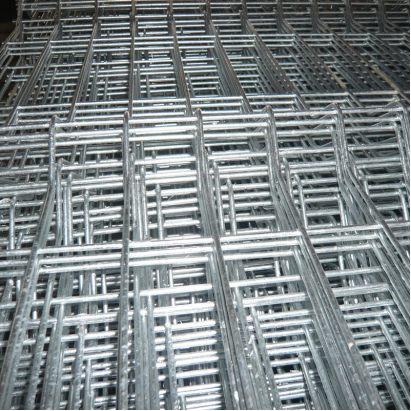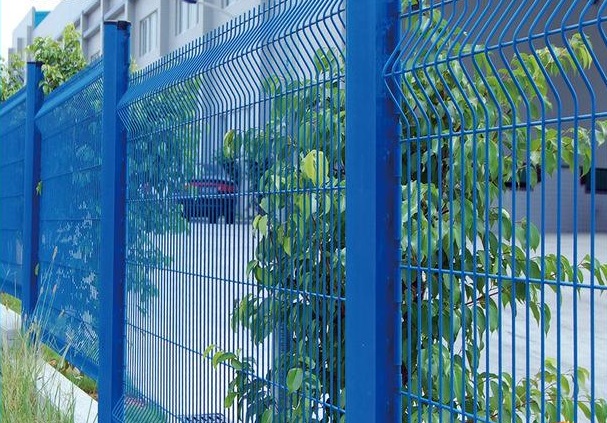- AFRIKANINA
- albaney
- amharic
- Arabo
- Armeniana
- Azerbaijani
- Baska
- Belarusian
- Bengali
- Bosniaka
- biolgara
- Katalana
- Cebuano
- CHINE
- Shina (Taiwan)
- Korsika
- Kroaty
- TSEKY
- Danoà
- Anarana iombonana
- anglisy
- esperanto
- Estoniana
- Anarana
- FRANTSAY
- Frisian
- galisiana
- Zeorziana
- Anarana
- GRIKA
- Gujarati
- Kreole Haitiana
- hausa
- Hawaii
- Hebreo
- tsia
- Miao
- hongariana
- Anarana
- igbo
- indonezianina
- TENY IRLANDEY
- ITALIANINA
- Anarana
- Javaney
- Kannada
- kazakh
- Khmer
- Rwanda
- Koreana
- Kiorda
- Kyrgyz
- asa
- Latina
- Zavatra tsy
- litoanianina
- Luxembourgish
- Masedoniana
- Malagasy
- Malay
- Malayalam
- Maltais
- Maori
- Marathi
- Mongoliana
- Madagascar
- Nepali
- norvejiana
- norvejiana
- Occitan
- Pashto
- PERSANINA
- poloney
- portogey
- Punjabi
- Malagasy Romanian
- ROSIANINA
- samoanina
- Gaelika Scottish
- serbianina
- anglisy
- Shona
- Sindhi
- Sinhala
- silaovaka
- Slovenianina
- Somali
- Fikarohana
- Sundanese
- swahili
- Anarana
- Tagalog
- Tajik
- Tamil
- Tatar
- Telugu
- Thai
- Tiorka
- Turkmen
- OKRAINIANA
- Urdu
- Uighur
- Uzbek
- vietnamiana
- valesa
- Vonjeo
- Yiddish
- Yoruba
- Zulu
Aug . 20, 2025 15:46 Hiverina any amin'ny lisitra
Welded Wire Fencing Rolls for Vine Support Structures
Vines, with their sprawling growth and heavy fruit loads, need sturdy support to thrive—enter welded wire fencing rolls. These versatile products, including welded wire roll and roll of welded wire, provide the perfect framework for grapes, tomatoes, cucumbers, and other climbing plants, ensuring they grow upright, receive sunlight, and avoid rot. Anping County Xingzhi Metal Wiremesh Products Co., Ltd, a leading metal wire mesh manufacturer with a state-of-the-art factory, produces high-quality welded wire fencing rolls known for their durability and precision. Their commitment to superior craftsmanship makes their wire mesh products a top choice for gardeners and farmers seeking reliable vine supports. This article explores how welded wire fencing rolls enhance vine growth, their key benefits, and how to choose and install them effectively.

Advantages of Welded Wire Fencing Rolls for Vines
- Strong Welded Construction: Unlike woven wire, welded wire fencing rolls feature wires welded at each intersection, creating a rigid, uniform grid. This strength allows them to support heavy vines and fruit without sagging—critical for grapevines or melon plants that can become quite weighty. The welds prevent the mesh from stretching or warping over time, ensuring the support structure remains stable season after season.
- Ideal Mesh Sizes for Climbing: Welded wire roll products come in various mesh sizes, from 2x2 inches to 4x4 inches, perfect for different vine types. Smaller meshes work well for delicate vines like peas or clematis, while larger openings accommodate thicker-stemmed plants like grapevines. The grid design gives vines plenty of points to cling to, encouraging upward growth instead of sprawling on the ground.
- Durability in Outdoor Conditions: Most roll of welded wire options are galvanized or coated, protecting them from rust and corrosion caused by rain, humidity, and soil moisture. This longevity means the support structure can last for years, even in damp garden environments, reducing the need for frequent replacements.
Choosing the Right Welded Wire Roll for Vines
- Mesh Size Matching Vine Type: For thin, delicate vines (e.g., pole beans), a welded wire roll with 2x2-inch mesh is ideal—small enough to provide ample climbing points without overwhelming the plant. For thicker vines like grapes or kiwis, opt for 3x3-inch or 4x4-inch mesh, which gives stems room to grow while still offering support. Mismatched mesh sizes can either restrict growth or fail to provide enough stability.
- Wire Gauge Considerations: The thickness of the wire (gauge) affects the roll’s strength. A heavier gauge (lower number) is better for large, heavy vines—think 14-gauge for grapevines. Lighter gauges (16–18) work for smaller plants like tomatoes. Welded wire fencing rolls from Anping County Xingzhi often come in a range of gauges, allowing gardeners to pick the perfect balance of strength and flexibility.
- Coating for Longevity: Galvanized roll of welded wire is a smart choice for outdoor vine supports, as the zinc coating resists rust. For organic gardens or areas where appearance matters, plastic-coated options (in green or black) blend into the landscape while adding an extra layer of protection against the elements.
Installing Roll of Welded Wire for Vine Supports
|
Installation Step |
Action |
Why It Matters |
|
Prepare the Structure |
Attach roll of welded wire to posts (wooden or metal) using staples or zip ties, ensuring it’s taut. |
A tight installation prevents sagging under the weight of growing vines. |
|
Leave Room for Growth |
Install the wire 2–3 feet above the ground, with additional rows spaced 1–2 feet apart for tall vines. |
Allows vines to climb vertically without overcrowding, ensuring sunlight reaches all parts. |
|
Secure Edges and Joints |
Overlap adjacent welded wire fencing rolls by 2–3 inches and secure with wire ties at each intersection. |
Prevents gaps where vines might slip through or the structure might weaken. |
|
Add Cross Supports if Needed |
For extra stability (e.g., for heavy grapevines), add horizontal crossbars behind the wire mesh. |
Reinforces the structure, distributing weight evenly and preventing bending. |
This table outlines key steps to install welded wire fencing rolls for effective vine support.
Maintaining Welded Wire Fencing Rolls in Vineyards
- Inspect for Damage Seasonally: Each spring, check welded wire roll supports for rust, broken welds, or loose connections. Small rust spots can be treated with a rust-inhibiting spray, while broken welds or tears may require patching with wire ties or a small piece of extra mesh. Catching issues early prevents the structure from failing during the growing season.
- Clear Debris Regularly: Fallen leaves, twigs, and vine clippings can accumulate on and around welded wire fencing rolls, trapping moisture and promoting rust. Use a brush or leaf blower to clear debris, especially in the fall after pruning. This also helps keep pests (like rodents) from nesting near the base of the vines.
- Adjust Tension as Needed: Over time, even the sturdiest roll of welded wire may loosen slightly, especially after heavy rain or strong winds. Tighten any loose connections to posts and re-stretch the mesh if sagging occurs. This ensures the support remains firm, allowing vines to continue growing upright.
Welded Wire Fencing Rolls FAQS
How Long Do Welded Wire Fencing Rolls Last in Vineyards?
With proper maintenance, welded wire fencing rolls can last 10–15 years. Galvanized or coated options last longer, as they resist rust—critical for longevity in damp vineyard environments.
Can Welded Wire Roll Be Cut to Custom Sizes?
Yes, welded wire roll can be cut with wire cutters to fit specific support structures. Measure the area carefully before cutting, and wear gloves to avoid sharp edges. Cutting allows for customization around posts or uneven terrain.
Is Welded Wire Fencing Rolls Suitable for All Vine Types?
Mostly, yes! Welded wire fencing rolls work for everything from small flowering vines to large fruit-bearing varieties. Just match the mesh size to the vine’s thickness—smaller meshes for delicate plants, larger ones for heavy vines.

How Far Apart Should Posts Be for Roll of Welded Wire Supports?
Posts for roll of welded wire supports should be spaced 6–8 feet apart. This distance balances stability and material efficiency—closer posts add strength but increase cost, while wider spacing may cause the wire to sag.
Where Can I Find High-Quality Welded Wire Fencing Rolls for Vines?
Anping County Xingzhi Metal Wiremesh Products Co., Ltd offers top-quality welded wire fencing rolls, welded wire roll, and roll of welded wire designed for durability in garden and agricultural settings. Visit their website to explore their range and find the perfect vine support solution for your needs.
-
Durable River Bank Gabion Mesh Solutions for Protection
NEWSNov.17,2025
-
Durable and Reliable cbt-65/60 Razor Barb Wire for Security Fencing
NEWSNov.17,2025
-
Rock Filled Gabion: Durable Solutions for Industrial Landscaping
NEWSNov.17,2025
-
Durable 2.1*2.4m Australia Std Galvanized Temporary Fence
NEWSNov.17,2025
-
Durable PVC Coated Temporary Fence Solutions for Industrial Sites
NEWSNov.17,2025
-
358 Anti Climb Welded Wire Mesh Fence - Anti-Cut Security
NEWSNov.17,2025




